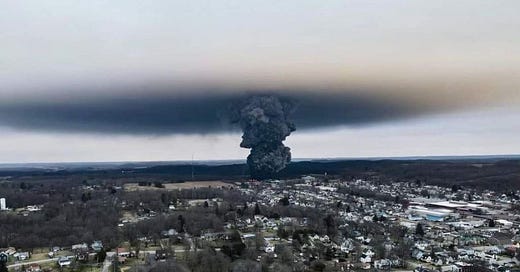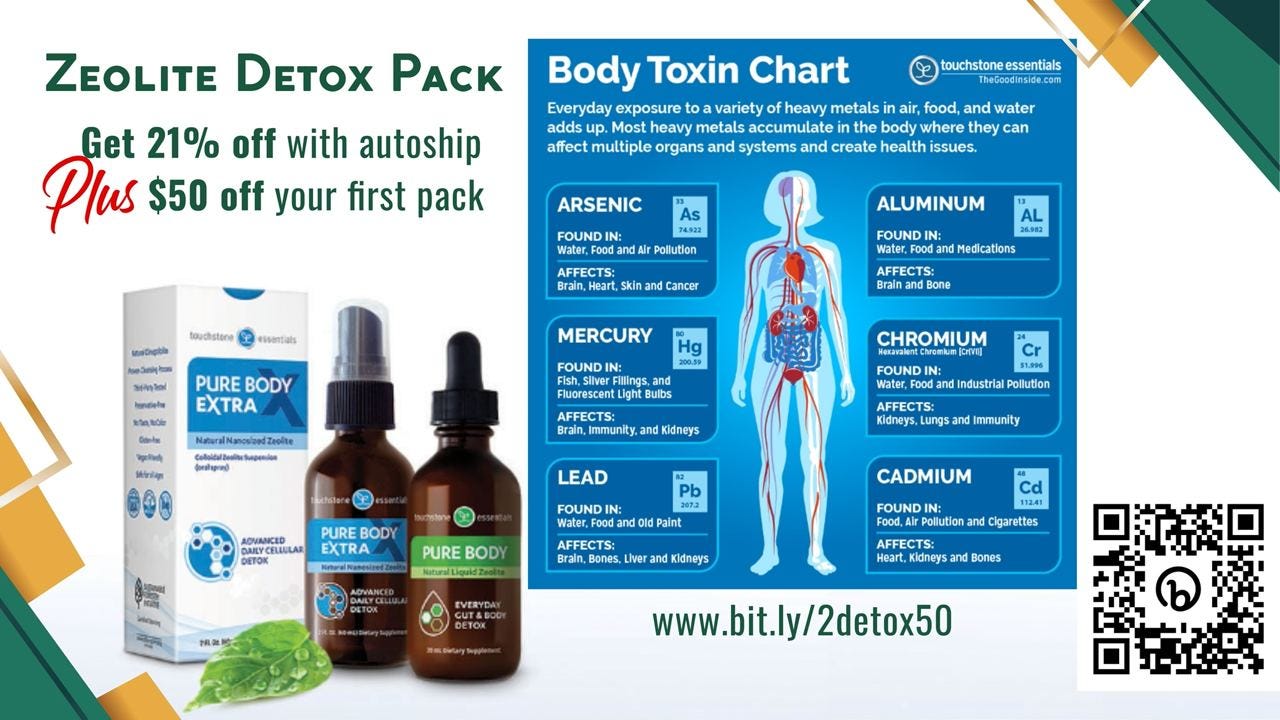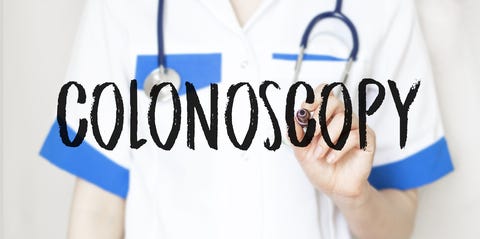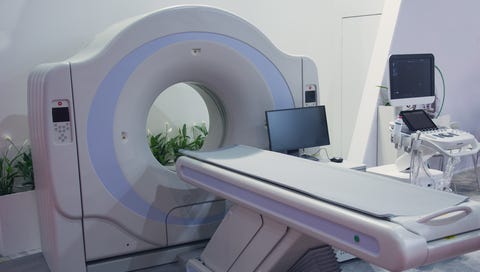
Last week, I wrote an extensive substack about Dioxin and the looming disaster for our entire country after the explosion and chemical fire in East Palestine. If you missed it, you can find it here. This week’s substack is about the effects of dioxin on the immune system.
The Immune System
Over the past 30+ years, research has established that the immune system can be compromised by infinitesimally small amounts of dioxin, knows as TCDD. Although the mechanisms are still not well understood, the adverse effect most consistently reported in toxicology literature is dioxin’s ability to suppress the activity of white blood cells (T-lymphocytes). Studies confirm that the presence of dioxin compromises the immune system to such an extent that if a person is exposed to garden-variety influenza A viruses, they are much more likely to have a deadly result.
How Does This Happen?
Dioxin, know as TCDD, suppresses the activity of cytotoxic lymphocytes (CTLs), specialized white blood cells that eliminate viruses and bacteria. Two primary types of “killer” white blood cells exist—natural killer cells (NK) and CD8+ cells. Both circulate silently through the blood, destroying unwanted particles as they are found. NK and CD8+ cells do their work by releasing granules that cause infected cells to break apart; hence the virus “dies” because it cannot replicate. After the cell has been destroyed, the NK and CD8+ cells move on to snuff out more infected cells. Without fully functioning CTLs, it is believed that the host’s defenses can become overwhelmed by the replicating germs, often leading to death.
The body is very conservative in its use of vital resources. When healthy, there are only a few sentinel NK and CD8+ cells in circulation. However, if the first-line defenses are invaded, the number NK and CD8+ cells rapidly increase. They release proteins called cytokines, chemical messengers that recruit dozens of other specialized cells to eliminate the pathogen. Cytokines are responsible for causing the pain, fever, and inflammation associated with an infection and the readily recognized symptoms known as ‘the flu.’ The more cytokines that are released, the more serious the infection, and the more potentially deadly the outcome.
There are many different cytokines involved in an active infection but the two that are most relevant are IL-12 (pronounced interleukin 12) and IFNγ (pronounced interferon-gamma). Cytokine IL-12 induces (IFN-γ) production and triggers CD4 lymphocytes to differentiate into T-helper (Th1) cells. Studies suggest that IL-12 may play a vital role in eliminating many diseases, including viral and bacterial infections and cancer.
Dioxin on the Immune System
The immune system is extremely sensitive to the toxic properties TCDD, with NK and CD8+ cells being exquisitely sensitive to extremely small concentrations.
In 2000, a study was undertaken to determine how TCDD effects the ramp up and release of CD8+ cells. Mice were subjected to oral concentrations of TCDD of 1–10 µg/kg (the equivalent of 100 to 1,000 ppt) prior to being exposed to common influenza A viruses.
The number of CD8+ cells was reduced 60% compared to mice not exposed to TCDD (control group). Exposure to TCDD also altered the production of virus-specific antibodies, decreased the recruitment of CD8+ cells into the lung, and suppressed IL-12 levels in the lung. Finally, the mice exposed to TCDD exhibited a dose-responsive increase in mortality following an otherwise non-lethal influenza A virus infection.
In an early study, House et al. (1990) reported an increased mortality of mice to influenza virus after administration of a single dose of TCDD at 10, 1.0, or 0.1 /mcg/kg. Death was thought to be due to a dose‐related decrease in both IgM and IgG antibody formation and antibody-production B-cells. Later, Burleson (1996) confirmed that mice had an increased susceptibility to influenza A viruses after administration of a single dose of TCDD.
A cascade of immune responses occurs during an infection including interferon production, enhanced macrophage activity, ramped up NK cell activity, cytotoxic T lymphocyte activity, and IgM and IgG antibody production. Each of these immune functions is important in the prevention and/or control of the disease. Suppression of one or more of these important immune functions by TCDD can contribute to enhanced susceptibility to influenza A viral infection and subsequent mortality.
In toxicology, NOAEL is an abbreviation that means ‘no observed adverse effect level,’ meaning, at even the smallest possible dose, an adverse event is observed. In these studies, even a miniscule exposure to TCDD increased the mortality of the mice when exposed to either herpes viruses or influenza A viruses.
Even though the mechanism for how dioxin disrupts the immune system is not completely understood, Warren’s study (2000) confirmed and expanded upon mechanisms described by earlier researchers:
In the presence of dioxin, the “ramping-up” response to increase the number of infection-fighting white blood cells does not occur.
TCDD causes a disruption in the activity of cytokines in lung tissue, suppressing the production of cytokine IL-12 and at the same time increasing the levels of IFN-γby more than ten-fold.
Rampant production of IFN-γ leads to massive inflammation that kills infected cells but also causes extreme damage to normal lung tissues.
The runaway hyper-production of IFN-γ and other inflammatory cytokines is called a cytokine storm.
To further evaluate the cause of death in the mice, a study done by Luebke (2002) examined fluid extracted directly from the lungs of deceased mice. Did they die from rampant viral replication, overwhelming the body’s ability eliminate infected cells, or was it due to TCDD toxicity? The results proved that the increased mortality was due to the intense inflammatory action of the dioxin. In other words, the combination of a simple, usually benign, influenza infection and dioxin caused so much inflammation in the lungs—due to a massive cytokine storm—that the lung tissue was destroyed, leading to the death of the mice.
Even more recently, Fiorito et.al. (2017) found that the presence of TCDD can increase susceptibility to many infectious agents including coxsackievirus B3, cytomegalovirus (CMV), herpes simplex II, Epstein-Barr virus, and HIV-1. The paper concludes:
Overall, the available data support the concept that TCDD exposure may act as risk factor in promoting [many] viral diseases.
Persistent Poisoning
In addition to the Americans who were exposed to Agent Orange and others poisonous herbicides during the Vietnam war, the local people suffered horribly during the spraying and have continue to suffer. What is being done for the Vietnamese who not only had extremely high exposures, but continue to have ongoing dioxin exposures from food grown in forever-contaminated soil?
In 1986, Researchers J. Constable and Hoang Trong Quynh collected tissue samples of human fat from 120 randomly selected southern Vietnamese citizens who had entered the hospital in Ho Chi Minh City (formerly Saigon) for a variety of surgical operations. Sent to laboratories in the U.S., Canada, Sweden, and Germany for analysis, the fat samples revealed that 81 percent of the patients had dioxin in their tissues above “background levels” of 2–3 ppt, a unit of measure that is also expressed as nanograms per kilogram of body weight, or ng/kg.
In January 2001, the National Institutes of Environmental Health Sciences added TCDD to the list of substances “known to be human carcinogens.” The dioxin has been associated with blood cancers—non-Hodgkin’s lymphoma, Hodgkin’s disease and chronic lymphocytic leukemia (CLL)—and soft tissue sarcomas. In addition to the medically-confirmed and government-recognized cancers, the Veteran’s Administration offers the following list of conditions reportedly associated with exposure to Agent Orange: prostate cancer, respiratory cancers, multiple myeloma, type II diabetes, peripheral neuropathy, and spina bifida in children of exposed veterans.
In a study published in April 2003, lead researcher Jeanne Mager Stellman at Columbia University in New York, used overlooked pilot flight logs—documenting more than 10,000 spraying missions—to construct the most sophisticated computerized maps ever produced of the herbicide spraying. Stellman’s team recreated the flight-paths, combined them with the amount and type of agents delivered, and then superimposed the patterns on the known location of troops and the Vietnamese populations. Using census data for 20,000 Vietnam villages,
Stellman’s study corroborated that more than 3,100 towns were directly sprayed, affecting between two million and four million people. Nearly 50 years after the end the war, the effects of these highly persistent chemicals are still apparent in the Vietnamese.
While the contamination occurred over the entire country, the highest areas of contamination were in and around Bien Hoa City, a large metropolitan area in southern Vietnam, located approximately 20 miles north of Ho Chi Minh City (formerly Saigon). The city has evolved over the grounds of the former U.S. air base that staged hundreds of the spraying missions. Bien Hoa City is one of many cities in the Mekong Delta considered to be “dioxin hot spots” due to the high concentrations of residual chemicals in soil and water. Nearly 95 percent of the 43 people tested had TCDD levels as high as 413 ppt in their blood.
Accountability for Past Poisoning
Finally, in 2000, the Vietnamese and U.S. governments began collaborating on Agent Orange/dioxin issues. The Prime Minister's Office designated the Ministry of National Defense to be the Government of Vietnam project owner/partner on the Environmental Remediation of Dioxin Contamination at Danang Airport project.
In 2018, USAID signed agreements with Vietnam’s Ministry of National Defense (MND) for an initial five-year projected deemed the Dioxin Remediation at Bien Hoa Airbase Area project.
In January 2021, USAID and GVN partners completed a one-year project master planning process. The final plan presents a comprehensive ten-year implementation period of excavation and treatment activities costing up to $450 million.
Contaminated soils and sediments are excavated and hauled to a treatment structure that was constructed for the remediation. The soil and sediment was treated by a process called thermal desorption which heats the dirt to approximately 335 degrees Celsius. At that level, dioxin breaks down to carbon dioxide, water, and chloride. Any dioxin not destroyed in pile are captured and retreated prior to discharge. The treated soil can then be used for industrial and commercial reuse.
Chemical Everywhere - Worse than Thought?
I wrote a previous substack about chemicals. But it may be more pervasive and detrimental than thought. As of 2020, more than 350,000 chemicals and mixtures of chemicals have been registered for production and use, up to three times as many as previously estimated and with substantial differences across countries and/or regions.
A noteworthy finding is that the identities of many chemicals remain publicly unknown because they are claimed as confidential (over 50,000) or ambiguously described (up to 70,000). When looking at the country level, the numbers of chemicals registered vary from hundreds to up to hundreds of thousands. While some novel entities are regulated by governmental bodies and international agreements, many can be produced without any restrictions or controls.
Dioxin Exposure and Future Illness
The significance of these findings cannot be overstated and the fact that this information has been known for more than 30 years puts further importance in determining that is happening to the soil and water around the East Palestine disaster.
When vinyl chloride is burned, the heat creates a combustion process that forms dioxins and difurans, two of the most toxic synthetic chemicals produced on earth. Gram per gram, they are as toxic as radioactive nuclear waste. Testing is being under taken right now. I will write more about this as it becomes available.
Will the government begin immediate soil remediation, using soil washing, bioremediation and thermal desorption? Or, will they wait 25 years to start the process, like they did for Vietnam?
In the mean time…
Residents need to make sure they have a Vitamin D level of at least 80ng/ml to keep your resistance up against all types of infections.
The website HealEndo.com offers these suggestions:
Cooking your food may reduce dioxins by up to 44%.
Supplement with chlorella , a type of seaweed that comes in pills or capsules. When taken with your meal, chlorella may prevent your body from absorbing up to half of the dioxins found in your food. Up to 3gm per day is recommended. Chlorella can help the body excrete 9x more dioxins than those not eating chlorella, and reduce the amount of dioxins stored in the liver by nearly 30%.
Learn more about our suggestions to reduce damage associated from dioxin and other toxic chemicals by clicking on the banner below.




















Thank you so much for your informative substack!
We are up against it but by the grace of God and through His Word along with people such as Dr Tenpenny, Dr Ana, Dr Lee Merritt, Carrie Madej a healer and Karen Kingston along with so many more a path to take these gifts given to us by charity ( love) gives us hope and the the ability to discern, to combat this evil being perpetrated upon all of mankind ..I’m so thankful for Our Lord and Savoir for I know nothing is inpossible without Him..God bless you all and us all🙏💕